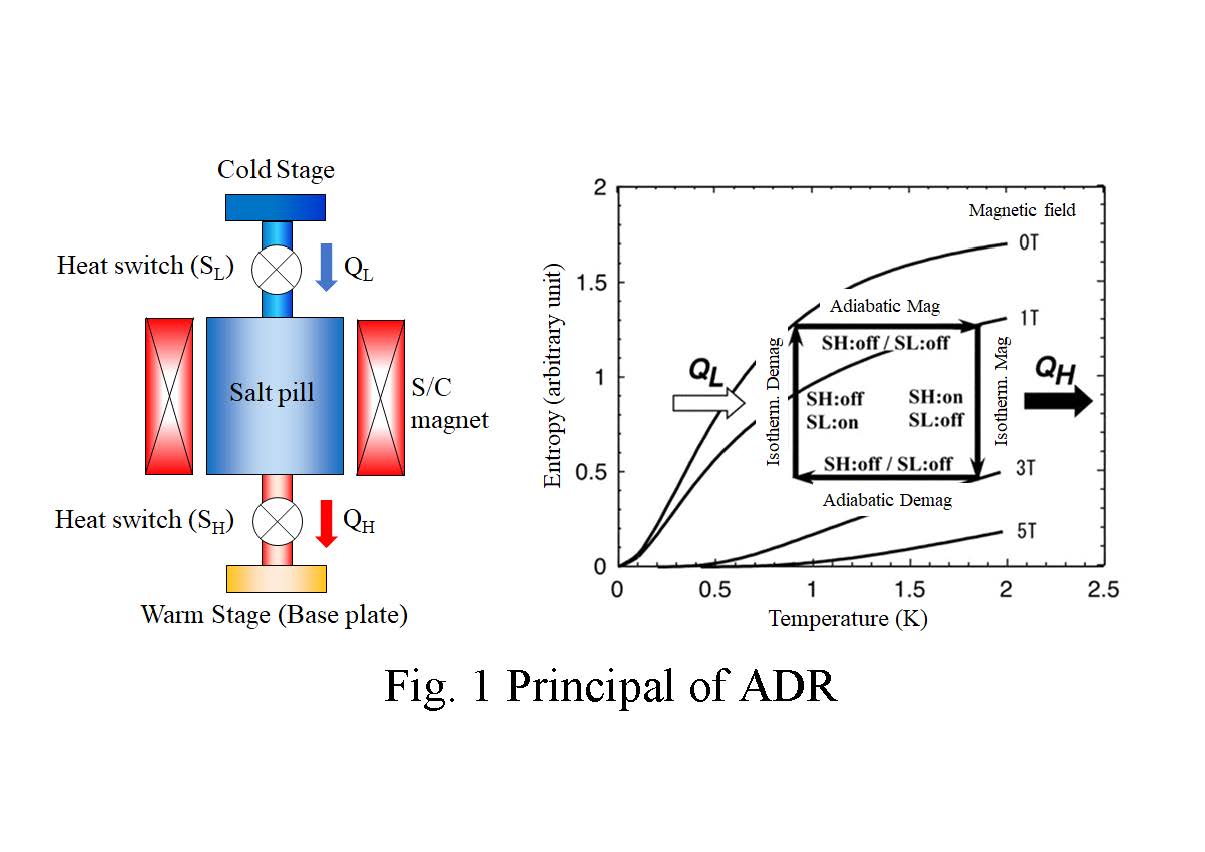AP-7-1-INV
Development of small superconducting magnets used for adiabatic demagnetization refrigerators for cooling of superconducting quantum computers
09:00-09:30 30/11/2023
*Koji Kamiya, Kyohei Natsume, Kohei Ouchi, Akira Uchida, Shinnosuke Matsunaga
National Institute for Materials Science, 3-13 Sakura, Tsukuba, Ibaraki 305-0003, Japan
Among the candidates for quantum computers currently under development are the superconducting quantum type [1], ion trap type [2], cavity QED type [3], optical quantum type [4], quantum dot type [5], and topological quantum type [6]. Among them, the superconducting quantum type is considered to be promising in terms of integration and speeding up of quantum gates. The circuit of the superconducting quantum type is based on an LC circuit with an inductor and a capacitor, where the ground state and the first excited state of the LC circuit are used as qubits. However, in a normal LC circuit, the energy level gaps are constant, so when microwaves corresponding to the excitation energy are applied, all the levels are excited, and it is difficult to excite only the target energy level. By using Josephson junctions, the gaps of the energy levels can be made non-uniform. In order to control the qubit with high precision, the operating temperature should be one order of magnitude smaller, 20-30 mK or below.
Today, helium 3 - helium 4 dilution refrigerators (DR) are widely used for cooling of quantum computers [7]. The DRs have at least 2 thermal anchors at Mixing Chamber (MXC) and 1K Pod, and the cooling power of the DRs are becoming higher as quantum computers become larger scale. Because the DRs require a large amount of high-purity He3 due to their principle, and because circulation pumps and He gas purifiers are indispensable, it is highly likely that there will be a shortage of He3 as a quantum computers become more widespread.
On the other hand, another type of refrigerator that can generate ultra-low temperatures below 1 K is the Adiabatic Demagnetization Refrigerator (ADR), a type of magnetic refrigeration [8-10]. ADR differs from dilution refrigerators in that it uses much less helium, making the system simpler and more energy efficient. Figure 1 shows the schematic of the ADR and its entropy -temperature diagram, which consists of a salt pill showing the magnetic calorific effect, a superconducting magnet, and thermal switches. This study reports the development of small NbTi superconducting magnets used for an adiabatic demagnetization refrigerator and presents the results of cooling tests using them.
[1] Nakamura, Y., Pashkin, Y., and Tsai, J. Coherent control of macroscopic quantum states in a single-Cooper-pair box. Nature 398, 786–788 (1999). https://doi.org/10.1038/19718
[2] Blatt, R., Wineland, D. Entangled states of trapped atomic ions. Nature 453, 1008–1015 (2008). https://doi.org/10.1038/nature07125
[3] Deléglise, S., Dotsenko, I., Sayrin, C. et al. Reconstruction of non-classical cavity field states with snapshots of their decoherence. Nature 455, 510–514 (2008). https://doi.org/10.1038/nature07288
[4] J. Carolan, C. Harrold, C. Sparrow, E. Martin-Lopez, N.J. Russel, J.W. Silverstone, P.J. Shadbolt, N. Matsuda, M. Oguma, M. Itoh, G.D. Marshall, M.G. Thompson, J.C.F. Matthews, T. Hashimoto, J.L. O’Brien, A. Laing, Universal Linear Optics, Science 349, 711 (2015). https://doi.org/10.1126/science.aab3642
[5] Ladd, T., Jelezko, F., Laflamme, R. et al. Quantum computers. Nature 464, 45–53 (2010). https://doi.org/10.1038/nature08812
[6] Albrecht, S., Higginbotham, A., Madsen, M. et al. Exponential protection of zero modes in Majorana islands. Nature 531, 206–209 (2016). https://doi.org/10.1038/nature17162
[7] Bluefors XLD Dilution Refrigerator System [Online], Available: https://bluefors.com/products/xld-dilution-refrigerator/
[8] Langevin P, Ann. Chem. Phys. 5 pp. 70 (1905).
[9] Debye P, Einige Bemerkungen zur Magnetisierung bei tiefer Temperatur, Ann Phys. 81, pp.1154-1160 (1926).
https://doi.org/10.1002/andp.19263862517
[10] Giauque WF and MacDougall DP, J. Am. Chem. Soc. 57, 1175 (1935). https://doi.org/10.1021/ja01310a007
This work was supported by JSPS KAKENHI Grant Number 23K03703.
